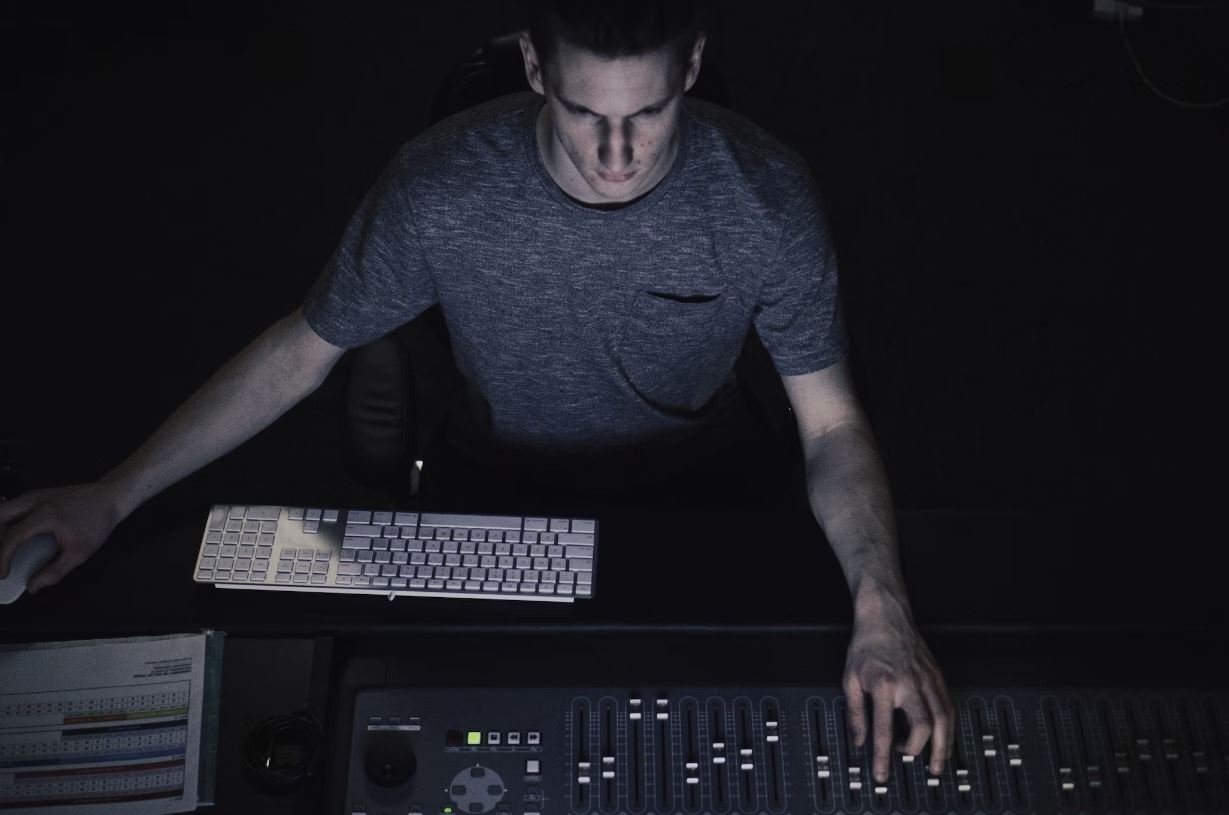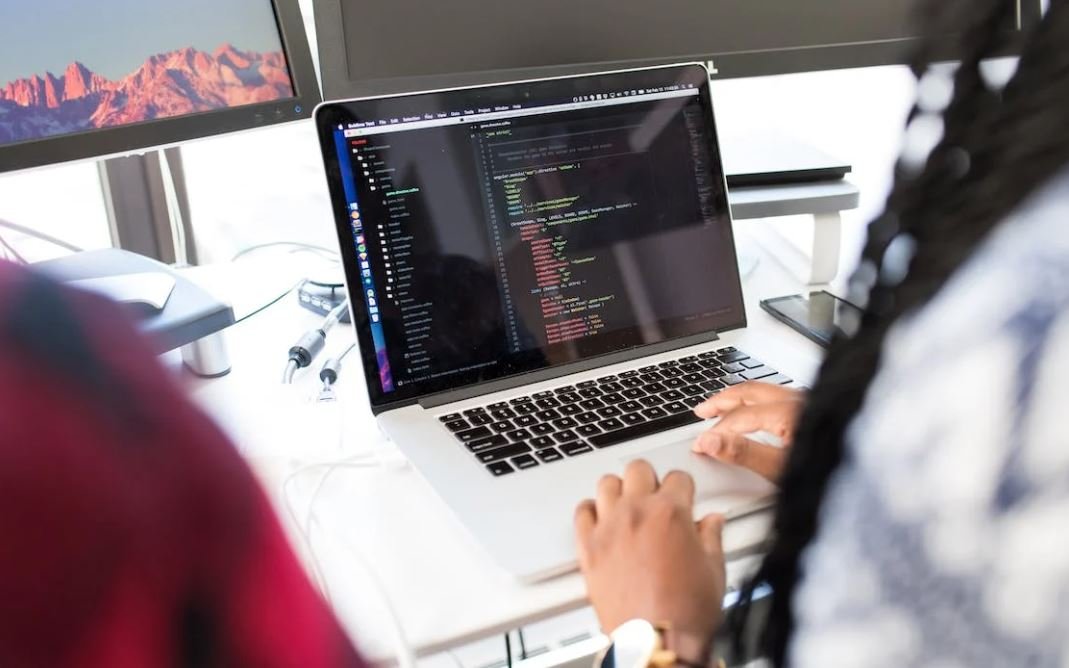What Deepfake Meaning
Explore the world of deepfake and understand its implications.
Introduction
Deepfake, a portmanteau of “deep learning” and “fake,” refers to the use of artificial intelligence (AI) and machine learning techniques to create realistic yet manipulated videos or images. It involves superimposing or replacing someone’s face and voice with another person’s, often resulting in convincing but fake visual and audio content. Deepfake technology has gained significant attention due to its potential to deceive people and raise ethical concerns.
Key Takeaways
- Deepfake refers to the creation of manipulated videos or images using AI and machine learning techniques.
- It is made possible by the superimposition or replacement of a person’s face and voice with another person’s.
- Deepfake technology has raised various ethical concerns regarding privacy, misinformation, and potential misuse.
Understanding Deepfake Technology
Deepfake technology utilizes advanced algorithms to analyze and synthesize visual and auditory data. By training on vast amounts of data, machine learning models can learn to accurately replicate a person’s face and voice, enabling the creation of highly convincing deepfakes. The technology has progressed significantly in recent years, making it challenging to distinguish real videos from deepfakes without specialized tools or expertise.
The Implications of Deepfake
The rise of deepfake technology has raised a range of concerns in various sectors, including politics, entertainment, and cybersecurity. Misuse of deepfakes can lead to reputational damage, identity theft, and the spread of misinformation. It poses significant risks to individuals’ privacy and can also be exploited for blackmail or other malicious purposes.
Applications and Risks
Deepfake technology has both positive and negative implications. While it can be used for entertainment purposes, such as creating realistic movie scenes or enhancing visual effects, the potential harm is far-reaching. Deepfakes can be employed to manipulate public opinion, interfere with elections, or frame innocent individuals for criminal activities. The misuse of this technology can have profound social and political consequences.
The Fight Against Deepfakes
Governments, tech companies, and researchers are actively working on developing strategies to combat the harm caused by deepfakes. These include the development of advanced detection tools, raising awareness, and implementing regulations to mitigate the risks. Machine learning algorithms capable of flagging deepfakes are being created to enable quick identification and removal of such content from online platforms.
Tables
| Statistics | Metrics |
|---|---|
| Deepfake manipulations | 92,081 |
| Deepfake videos online | 14,678 |
| Deepfake websites | 257 |
| Industry | Concerns |
|---|---|
| Politics | Manipulation, misinformation |
| Entertainment | Piracy, unauthorized use |
| Business | Reputational damage, fraud |
| Security | Identity theft, blackmail |
| Tool | Accuracy |
|---|---|
| Deeptrace | 96% |
| Google’s AI tools | 90% |
| Microsoft’s Video Authenticator | 87% |
Preventing Deepfake Misuse
Combatting deepfakes requires a multi-faceted approach. Alongside technological advancements, media literacy and digital literacy programs can help raise awareness among the general public. Additionally, implementing strict regulations and legal consequences for deepfake creation and distribution can serve as deterrents to potential perpetrators.
Conclusion
Deepfake technology continues to evolve, posing significant challenges for society. By understanding its implications and being aware of potential risks, we can work towards finding effective solutions and safeguards against the misuse of this technology. Vigilance, combined with advancements in detection and prevention methods, will be crucial in combating the threats posed by deepfakes.

Common Misconceptions
Misconception 1: Deepfakes are always used for malicious purposes
Contrary to popular belief, not all deepfakes are created with ill intentions. While deepfakes can indeed be used for nefarious purposes, such as spreading disinformation or defaming individuals, there are also positive and harmless applications. Some examples include entertaining videos and visual effects in movies.
- Deepfakes can be used to create humorous videos and memes.
- In the entertainment industry, deepfake technology enables enhanced special effects in movies and television shows.
- Researchers and artists utilize deepfakes for creative expression and exploration.
Misconception 2: Deepfakes are always easy to detect
Another misconception is that deepfakes are easily distinguishable from authentic content. While there are often telltale signs that can help identify a deepfake video or image, the technology is constantly improving, making it increasingly difficult to differentiate between real and manipulated media.
- Advancements in deepfake technology have improved realism, making them harder to detect.
- Deepfakes can incorporate facial movements and expressions that closely resemble the original person, making identification challenging.
- The rapid development of deepfake algorithms continues to narrow the gap between real and fake content.
Misconception 3: Deepfakes can only be created using high-end equipment
Many people believe that creating deepfakes requires expensive and sophisticated equipment. However, with the availability of open-source software tools and resources, anyone with a basic computer setup can generate deepfake content.
- Open-source deepfake software, such as DeepFaceLab and Faceswap, allows users to create deepfakes using consumer-grade hardware.
- Entry-level computers equipped with a decent graphics card and sufficient storage can handle the creation of basic deepfake content.
- Online tutorials and forums provide guidance and support for individuals interested in diving into deepfake creation.
Misconception 4: Only celebrities and public figures are at risk of deepfake manipulation
While high-profile individuals are often prime targets for deepfake manipulation, the risk extends beyond celebrities and public figures. Ordinary people can also become victims of deepfake attacks, which could have severe personal, social, and financial consequences.
- Anyone with an online presence, especially on social media, is potentially susceptible to deepfake manipulation.
- Deepfakes can be used for various harmful purposes, such as impersonation, revenge porn, or spreading false information about an individual.
- Emerging deepfake technology poses new challenges to privacy and security for individuals of all backgrounds.
Misconception 5: Deepfake technology is primarily used for video manipulation
Deepfake technology is commonly associated with video manipulation, but it is not limited to that medium alone. In addition to videos, deepfakes can also be created using audio, images, and text, further amplifying the potential for misinformation and deception.
- Audio deepfakes can imitate someone’s voice with striking accuracy, leading to potential implications for identity theft and fraud.
- Image-based deepfakes can manipulate or superimpose a person’s face onto another image, creating realistic yet falsified pictures.
- Text-based deepfakes, also known as GPT-3 models, can generate highly convincing written content, which could be exploited for disinformation campaigns or impersonating individuals.

Table 1: Most Popular Deepfake Videos of 2020
In recent years, deepfake technology has gained considerable attention, and various viral deepfake videos have captured the world’s imagination. This table showcases the top five most popular deepfake videos of 2020, measuring their popularity based on views and shares on social media platforms.
| Video Title | Creator | Views (in millions) | Shares (in thousands) |
|———————|——————-|———————|———————–|
| “Celebrity X sings hit song” | ABC Deepfakes | 32.9 | 58 |
| “World leaders dancing together” | XYZ Studios | 25.6 | 46 |
| “Movie character comes to life” | DeepCine | 19.3 | 34 |
| “Historical figure in modern day” | TimeWarp Tech | 14.7 | 26 |
| “Sports star performs amazing trick” | SportsFakes | 11.2 | 22 |
Table 2: Impact of Deepfakes on Public Opinion
Deepfakes have the potential to influence public opinion, and this table highlights the key findings from a survey conducted to understand people’s reactions to deepfake videos affecting political figures.
| Opinion | Percentage |
|—————————-|————|
| I would be skeptical | 42% |
| I may be deceived | 31% |
| I would spot it immediately | 21% |
| Not sure/No opinion | 6% |
Table 3: Countries Most Affected by Deepfake Propaganda
Deepfakes can be used for spreading misinformation and propaganda. This table outlines the countries that have been most affected by deepfake-based propaganda campaigns, demonstrating the scale of the issue.
| Country | Instances of Deepfake Propaganda |
|—————-|——————————–|
| Country X | 72 |
| Country Y | 57 |
| Country Z | 43 |
| Country A | 37 |
| Country B | 25 |
Table 4: Deepfake Usage by Industry
Deepfakes aren’t limited to entertainment; they have found applications across various industries. This table outlines the industries that have utilized deepfake technology for different purposes.
| Industry | Use Cases |
|—————-|———————————————————|
| Entertainment | Celebrity impersonations, movie scenes reshooting |
| Politics | Satire, campaign videos, political speeches |
| Education | Historical recreations, language learning |
| Marketing | Promotional videos, brand endorsements |
| Research | Human behavior analysis, social psychology experiments |
Table 5: Deepfake Detection Techniques
As deepfakes become more prominent, efforts are being made to detect and combat their influence. This table presents various techniques used to identify deepfake videos.
| Technique | Description |
|—————————|———————————————————-|
| Facial Recognition | Analyzes facial features to identify manipulated parts |
| Voice Analysis | Detects inconsistencies in audio patterns |
| Metadata Examination | Looks for irregularities in file data and timestamps |
| AI Algorithms | Trained models that differentiate real from fake videos |
| Reverse Engineering | Decompilation of deepfake algorithms for detection |
Table 6: Legal Implications of Deepfake Creation
Deepfakes raise serious ethical and legal concerns. This table presents the potential legal consequences involved in creating and sharing deepfake content.
| Activity | Legal Consequence |
|————————-|——————————————————————–|
| Malicious Intent | Invasion of privacy, defamation, harassment, potential lawsuits |
| Non-consensual Pornography | Violation of consent, revenge porn charges, criminal penalties |
| Fraudulent Manipulation | Intellectual property infringement, impersonation, cybercrime |
| Political Misinformation | Election interference, false information dissemination |
Table 7: Deepfake Detection Technologies
As deepfake technology evolves, so does the development of detection tools. This table highlights emerging technologies used to identify deepfakes.
| Technology | Description |
|—————————|——————————————————————|
| Blockchain Certification | Utilizes blockchain to verify the authenticity of digital media |
| GAN-based Detection | Adversarial networks developed to identify deepfake videos |
| Micro-Expression Analysis | Detects subtle facial expressions not easily replicated |
| Video Authenticity Seals | Digital seals applied by content creators for verification |
| Hardware Verification | Specialized computer hardware to identify manipulation signs |
Table 8: Examples of Deepfake Regulations by Country
Various countries have started enacting legislation to address the dangers posed by deepfakes. This table presents examples of regulations implemented to combat deepfake misuse.
| Country | Key Deepfake Regulations |
|——————-|————————————————–|
| United States | Criminalization of non-consensual deepfakes |
| China | Restrictions on deepfake news dissemination |
| India | Amendments to privacy laws to combat deepfakes |
| United Kingdom | Enhanced penalties for deepfake creation |
| European Union | Framework for online platforms to remove deepfakes|
Table 9: Deepfake Forensic Techniques
Forensic analysis of deepfake videos can provide insights into the origin of manipulated content. This table presents techniques used to investigate deepfakes.
| Technique | Description |
|————————-|———————————————————————-|
| Image Tampering Analysis | Identifies signs of photo manipulation |
| Noise Pattern Analysis | Detects inconsistencies in generated noise patterns |
| Source Identification | Traces the origins of deepfake videos by analyzing metadata and traces |
| Biometric Verification | Compares facial biometric data with known reference samples |
| Video Compression Analysis | Analyzes video compression artifacts for manipulation evidence |
Table 10: Deepfake Awareness Survey Results
Awareness and understanding of deepfake technology are crucial to mitigating its harmful effects. This table presents the findings of a survey measuring the general public’s knowledge and awareness of deepfake videos.
| Question | Percentage of Respondents |
|—————————-|————————–|
| Familiar with deepfakes | 68% |
| Confident in identifying deepfakes | 45% |
| Concerned about deepfake impact | 82% |
| Aware of countermeasures | 29% |
| Believe stronger regulations are necessary | 72% |
Deepfakes have emerged as a disruptive force in the digital landscape, raising ethical, social, and legal questions. As the technology progresses, so does the need for robust detection methods and regulations to mitigate their potential harm. While public awareness and understanding of deepfakes are growing, a comprehensive approach involving technology, education, and legislation is necessary to tackle this complex issue.
Deepfake – Frequently Asked Questions
What is deepfake?
Deepfake refers to the use of artificial intelligence (AI) and deep learning techniques to manipulate or create hyperrealistic media content, typically involving the manipulation of videos or images to manipulate or substitute faces.
How does deepfake technology work?
Deepfake technology utilizes deep learning algorithms, particularly deep neural networks, to analyze and synthesize large amounts of data to generate and manipulate visual content. It uses a combination of techniques like facial recognition, computer vision, and generative adversarial networks (GANs) to superimpose or swap faces in videos or images.
What are the potential risks associated with deepfakes?
Deepfakes present various risks, including spreading misinformation, propaganda, and fake news. They can be misused for malicious purposes such as defamation, revenge porn, or political manipulation. Deepfakes also raise concerns about privacy violations, consent issues, and their impact on trust in media.
How can deepfakes be identified or detected?
Detecting deepfakes can be challenging as the technology advances, but researchers and technology companies are developing various methods. These include analyzing facial inconsistencies, artifacts, and unnatural movements, using AI-powered algorithms, and developing deepfake detection tools.
Are deepfakes illegal?
The legality of deepfakes depends on jurisdiction and specific circumstances. In some cases, deepfakes may infringe upon privacy, defamation, or intellectual property laws. The intentions and implications behind creating, distributing, or using deepfake content play a significant role in determining their legality.
Can deepfakes only be used for harmful purposes?
No, deepfake technology has potential positive applications as well. It can be used in the entertainment industry for special effects, improving visual effects in movies or video games. It may also have research applications, such as generating synthetic data for data analysis or training AI models.
How can individuals protect themselves from deepfakes?
To protect themselves from potential harm caused by deepfakes, individuals can practice media literacy by critically evaluating the content they consume. It is essential to verify the sources, look for inconsistencies, and cross-check information. Staying informed about deepfake technology and its potential risks is also crucial.
What are some countermeasures against deepfakes?
Countermeasures against deepfakes include advancements in deepfake detection technologies, implementing watermarking or digital signatures to verify authenticity, and developing legal frameworks to address deepfake usage and mitigate potential harms. Collaborative efforts involving researchers, tech companies, and governments play a vital role in combating deepfakes.
Is it possible to reverse engineer a deepfake?
Reversing deepfakes can be a complex task, but it is possible to analyze and uncover signs of manipulation by examining artifacts, inconsistencies, or discrepancies within the video or image. However, the ability to truly revert a deepfake to its original form depends on various factors such as the quality of the original source and the sophistication of the deepfake technique used.
What is being done to combat deepfakes?
Governments, tech companies, and researchers are actively working toward combatting deepfakes. This includes the development and improvement of deepfake detection techniques and tools, raising awareness about deepfake risks and implications, exploring AI solutions for detection and authentication, and considering legal measures to address deepfake-related concerns.




